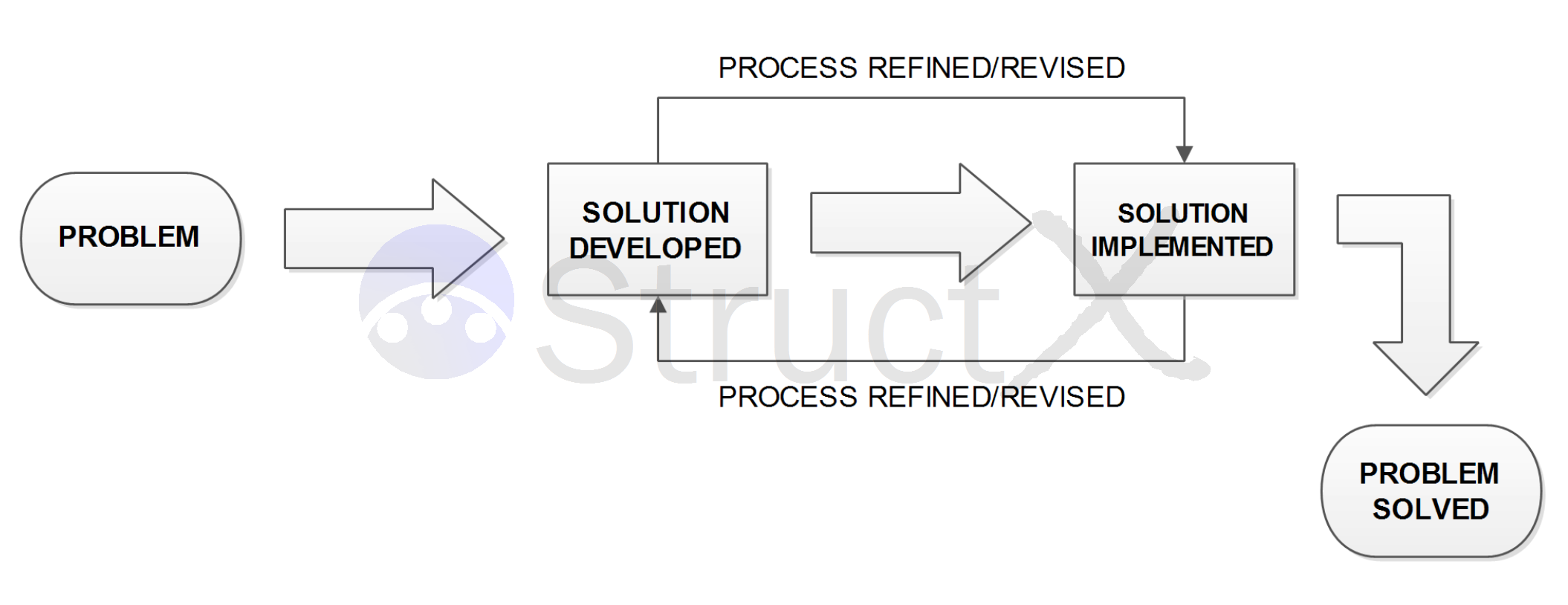Problem Solving - Problems Defined
Problems at their most basic
Problems defined broadly arise when an obstacle prevents us reaching an objective. That is, a problem can be thought of as:
“Something that prevents us from reaching what we have decided we want or need to achieve.”
Solving such problems involves finding ways to overcome these obstacles to allow us to achieve our objective. It is important to remember that problems, issues and conflicts happen all of the time and they should be thought of as opportunities to improve existing areas, systems and relationships. The more problems that get solved the more things will run smoothly and to a higher standard, in any context.
The Four Causes of Problems
In order to solve a problem the underlying causes must be identified and understood before a solution can be developed and implemented. Generally the causes of problematic obstacles come in four forms:
- Physical Cause: Tangible, where material items or objects have failed in some way.
- Human Cause: Human error, someone/s did something they shouldn’t have, something that wasn’t needed or at the wrong time. It should be noted that human errors generally lead to a physical cause.
- Organisational Cause: A system, process, or policy is faulty or was not adopted in the way intended. Organisational causes can be a starting point for human causes and can also lead to physical causes as well.
- Environmental Cause: The surroundings works against achieving a goal. If moving to a new area or removing the existing influences is not an option a barrier is required. Environmental causes offer another area to consider when conducting an assessment of available problem solving options.
Example: A cog that is a part of a machine breaks causing the machine to stop.
Example: Someone forgets to put oil in a machine which eventually results in a cog breaking.
Example: A policy of topping up a machine with oil every 12 months is found to be not frequent enough.
Example: A steel cog unprotected in salt water will corrode.
The Four Types of Problems
Problems can be grouped into four basic categories based on how much is known about them and how often similar type problems are encountered. Based on the combination of categories the problem falls into can give a good indication of how much involvement is required to solve the problem. These four categories are made up of different combinations of the following groups:
- Well-Defined Problems: Are problems that have a clear goal or solution and their consequences are well understood. Problem solving strategies can be easily developed and implemented. These well-defined types are ideal as far as problems go and can be identified when the following details are obvious:
- Given State: The starting point and condition of the problem.
- Finite Influences: All possible rules and/or stimuli are known.
- Goal State: The final goal or state of the problem are clear.
- Poorly-Defined Problems: Are problems that are unclear, abstract, or confusing, and they do not have a clear problem solving strategy available.
- Routine Problems: Are problems that are straight forward and typical with a simple solution. These are representative of everyday problems which we solve, sometimes without even thinking.
- Non-Routine Problems: Are problems that are more abstract or subjective and requires a strategy or some imagination to solve.

Types of Problem and Solution Combinations
Not only is identifying what type of problem you are dealing with important, but coming to terms with all available solutions is the only way to get the best final results. There are four basic Problem/Solution combinations and each pairing can require a different approach.
- Known Problem / Known Solution: The problem is known and the solution to the problem is also known. All that is required is that the solution be implemented. When solving these types of problems the only thing that has to be done to solve the problem is the solution. This is the simplest of problem types and the biggest factors for the problem not being solved are usually procrastination and resistance to change.
- Known Problem / Solution Requires Additional Information: The problem is known but more information, additional skills, or information handling techniques are required to formulate the solution. That is, a solution exists and has been identified but implementing it will require additional expertise to fully understand the benefits and consequences of putting the solution in place.
- Known Problem / Solution Requires a Creative Approach: Both the problem and solution have been identified but implementing the solution requires a creative approach. When solving this type of problem generally no new information is required but instead rearranging of information and restructuring or rethinking how the information is used or applied is the biggest factor.
- Unknown Problem / Unknown Solution: The problem still needs to be identified and as a result of such the solution to the problem is yet to be determined. When something is not right or can be improved but the exact cause is not known. With this type of problem the realisation of a problem can be defined as the problem itself as a starting point. Challenging existing methods and assumptions is a good starting point to bringing to the surface potential causes to the problems/issues which are thought to exist.




